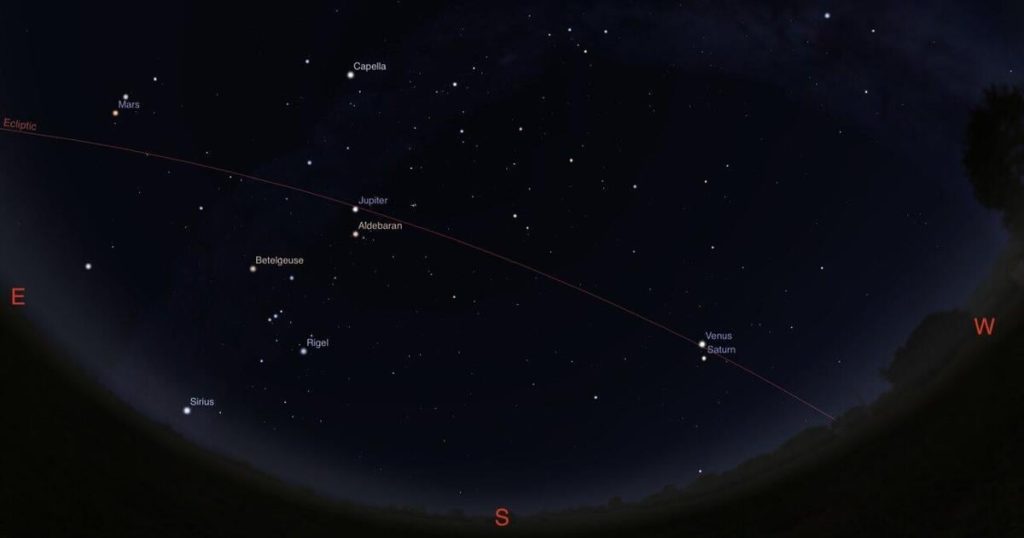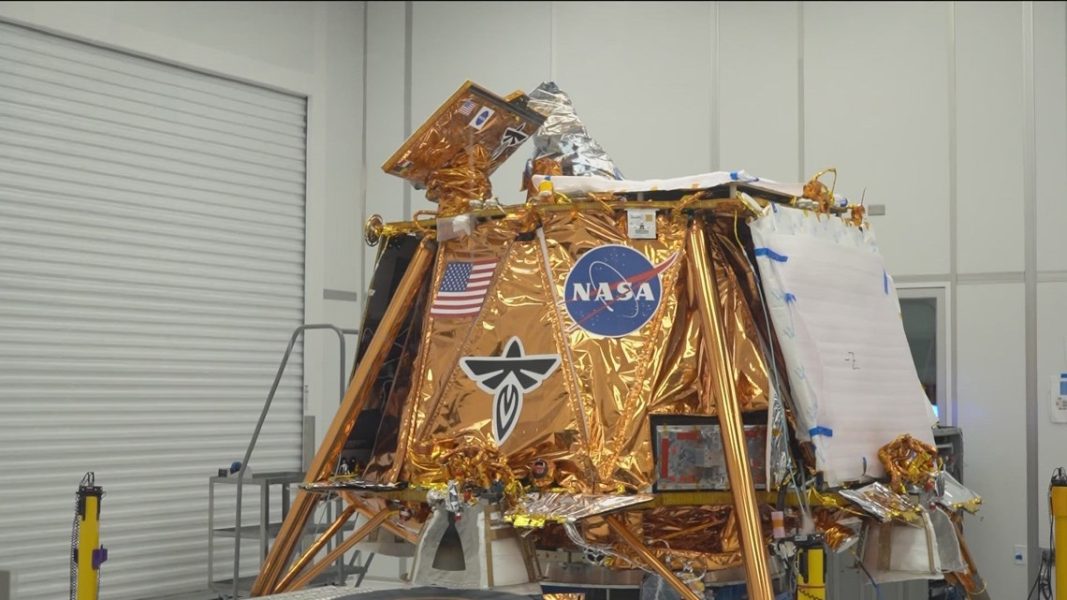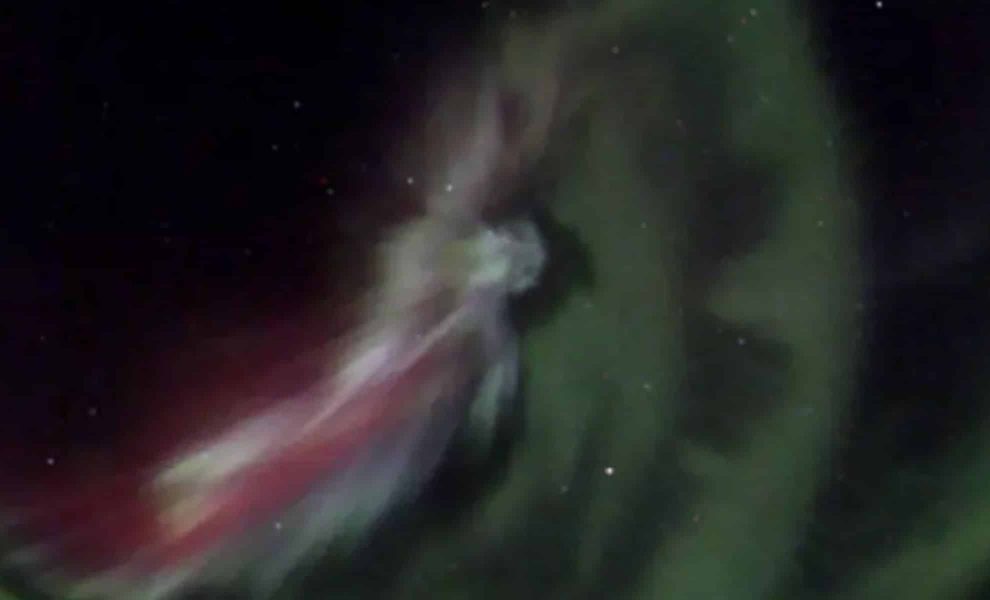Coming soon to the sky near you – Channel3000.com – WISC-TV3

Subscribe Today!
Archive
NewslettersDigital EditorThis projection shows the night sky on Jan. 20 at about 7 p.m. in Madison. Mars, Jupiter, Venus and Saturn are visible (with a telescope, Uranus and Neptune will be, too).We spent a lot of time last year looking up.There were some big-time shows in the sky in 2024, including the total solar eclipse in April and the northern lights displays in August. We set alarms, stayed up late … and discovered a new form of FOMO, since some celestial events won’t recur for years or decades.With 2025 just starting, what notable night-sky displays should be on our collective radar? We reached out to Jim Lattis, Director at UW Space Place, to find out.EclipsesBad news for solar eclipse enthusiasts: Both of next year’s solar eclipses are only partial (meaning that the moon will only appear to cover part of the sun in the sky).“It’s actually even worse than that,” Lattis said in a Jan. 14 talk at UW Space Place. “”It’s a partial solar eclipse that is only visible from the polar regions of Earth.”The silver lining? 2025 has two total lunar eclipses in store. A lunar eclipse can only occur when the Earth passes between the sun and the moon and casts its shadow on a full moon. The first, on March 14, will be visible in Madison (and throughout the Americas). The moon will first touch the earth’s shadow around 11 p.m. CST, with best viewing at 2 a.m. in Wisconsin.The planetary paradeIn January and February, six planets (Venus, Mars, Jupiter, Saturn, Uranus and Neptune) will all appear in the night sky. The only planet missing — Mercury — is notoriously tough to spot, particularly with the naked eye, since it appears very low in the sky. Your best chances at catching a glimpse of this elusive planet will come in early March and late June, just after sunset. Try to choose a viewing area without hills or trees that block the horizon. Here are a few places to stargaze in the Madison area. “It’s never more than about 10 degrees above the horizon,” Lattis said. He shared a useful tip to judge that: If you hold out your arm and make a fist, the width of your fist is approximately 10 degrees.Night owls have an advantage when it comes to astronomy, since many celestial events are best-viewed in the darkest hours of the night. But one of the interesting groupings in 2025 will be found in the eastern sky: On Aug. 12 around 5:30 a.m., Venus and Jupiter will both be visible. Lattis recommends viewing this through binoculars, since the planets will be too far apart to see simultaneously with a telescope.Meteor showers“The moon spoils a lot of meteor showers by being full,” said Lattis. “That decreases dramatically the number of meteors that you can see.”Of the three meteor showers this year — the Perseids, the Leonids and the Geminids — the latter two take place while the moon is nearly full. Luckily, the Perseids are in August: “We don’t have too much of a problem going out on a nice summer night and looking for meteors,” Lattis said. (For context, the other two are in November and December, respectively, during a considerably less pleasant season.)The Perseid meteor shower will peak on Aug. 12, with midnight to dawn being the best hours to view.A big eruption could be this year’s big newsT Coronae Borealis, nicknamed “the Blaze Star,” is a recurrent nova first discovered in 1866, though it may have also been viewed in 1217 and 1787. A recurrent nova is made up of a white dwarf star and a larger star, usually a red giant. The white dwarf’s gravity pulls material from the nearby, larger star.“The white dwarf is accumulating a layer of hydrogen, and when there’s enough of that hydrogen, it explodes all at once, just like a hydrogen bomb,” Lattis said. “That hydrogen all ignites at once, and the star becomes thousands and thousands of times brighter than it was for a few days.”The star is relatively dim and can only be seen with a large telescope. After a nova eruption, though, it becomes about as bright as the North Star.The Blaze Star, which tends to erupt every 80 years, last erupted in February 1946. If the star does erupt in 2025 — Lattis recommends monitoring spaceweather.com for news — look for it in the semicircle of stars between the bright star Arcturus and the constellation Hercules. “If that actually happens, that will be the big news — not the eclipses, not the meteor showers … it’ll be this eruptive nova,” said Lattis. “Whenever it goes, we’ll have learned a whole lot more about these kinds of very interesting stars out there.”Watch Lattis’ complete presentation here.Anna Kottakis is digital editor at Madison Magazine.COPYRIGHT 2025 BY MADISON MAGAZINE. ALL RIGHTS RESERVED. THIS MATERIAL MAY NOT BE PUBLISHED, BROADCAST, REWRITTEN OR REDISTRIBUTED.Light pollution is a hindrance to stargazing in Madison, but here are a few spots in the area where you can set up camp for a night of observing.Digital EditorAttend the Best of Business event on Feb. 20 to hear from some of Madison’s most innovative leaders.Fill out the form below to receive free downloadable Best of Madison nomination materials. Your browser is out of date and potentially vulnerable to security risks.We recommend switching to one of the following browsers:





